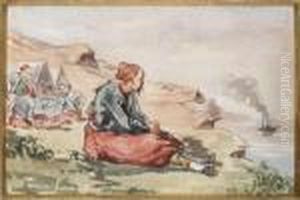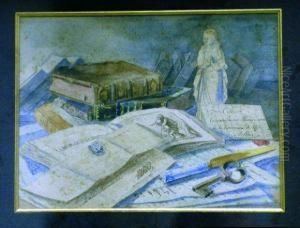Antonie Trachel Paintings
Antonie Trachel, a French artist born in 1820 and deceased in 1902, was a notable figure in the 19th-century European art scene, primarily recognized for her contributions as a painter. Her life and career offer a fascinating glimpse into the challenges and achievements of female artists during a period when the art world was overwhelmingly dominated by men. Trachel's work and legacy are emblematic of the broader struggles and successes of women in the arts during the 19th century.
Trachel's artistic journey began in an era when women faced significant barriers to formal art education and professional recognition. Despite these challenges, she managed to carve a niche for herself in the competitive landscape of French art. Her determination and talent led her to develop a distinctive style that captured the attention of her contemporaries and, eventually, art historians. Trachel's body of work primarily consisted of portraits and genre scenes, through which she explored the nuances of human expression and social interaction. Her keen observation of detail and subtle use of color distinguished her paintings and earned her a place among the respected artists of her time.
Throughout her career, Antonie Trachel navigated the gendered expectations and limitations imposed on female artists. She exhibited her works in various salons and exhibitions, a testament to her resilience and dedication to her craft. Despite the recognition she received during her lifetime, Trachel, like many women artists of her era, was somewhat overshadowed by her male counterparts in the historical record. However, recent scholarship has begun to reevaluate her contributions and place her more prominently within the narrative of 19th-century French art.
Trachel's legacy extends beyond her paintings. She is remembered as a trailblazer who paved the way for future generations of women in the arts, challenging societal norms and expanding the possibilities for female artists. Her life story is a testament to the enduring spirit of creativity and the struggle for recognition in a changing world. As art historians continue to uncover and reassess the works and lives of women artists like Trachel, her importance in the art historical canon is increasingly acknowledged and celebrated.


